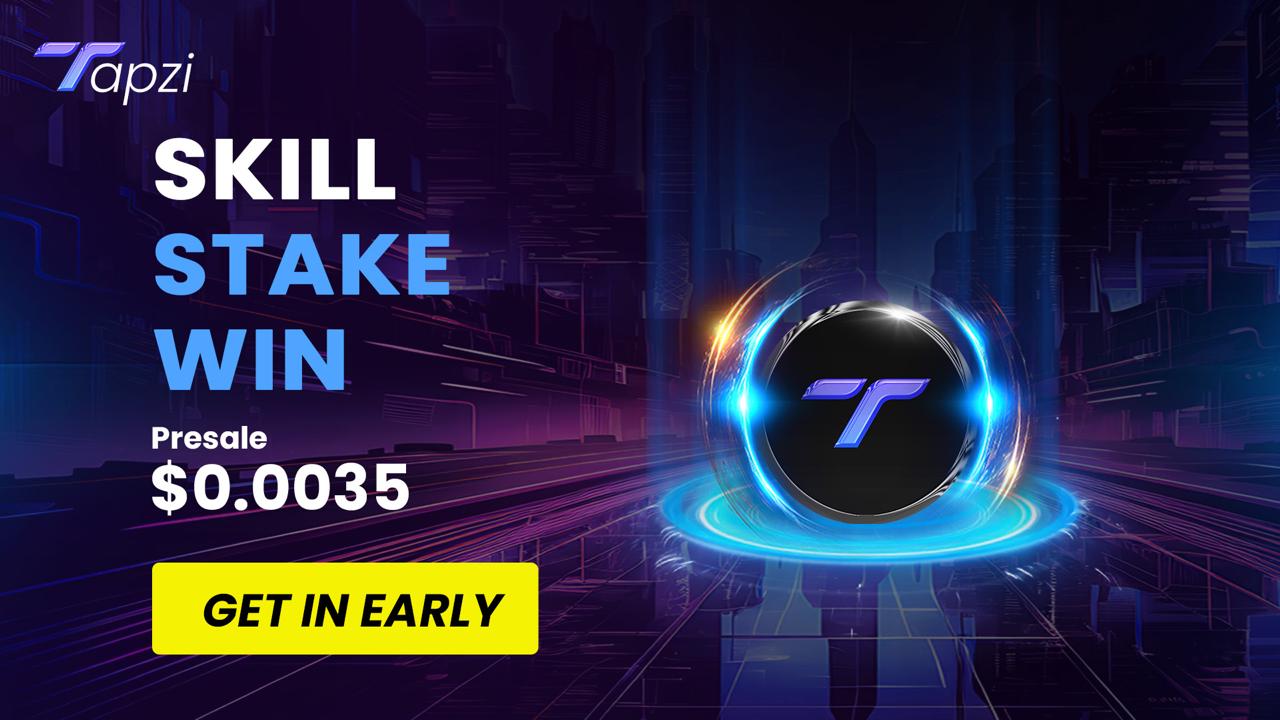7 Best Crypto Coins To Buy Now: 5000x Potential Hidden in These Explosive Goldmines

The downturn erased gains sparked by Federal Reserve Chair Jerome Powell’s hint at future rate cuts, which had temporarily fueled risk appetite across crypto markets. The correction was amplified by forced liquidations, with over $245 million in ETH and $175 million in bitcoin long positions unwound within 24 hours, according to CoinGlass.
Despite the short-term pullback, Ether has been leading market momentum in recent weeks, buoyed by strong ETF inflows, surging interest in tokenization, and increasing accumulation by corporations treating ETH as a yield-bearing treasury asset.
Nearly a third of supply is now staked, scaling solutions are maturing, and regulatory clarity is attracting institutional participation. These dynamics have helped ETH establish $4,000 as a new support level, underscoring a structural shift in leadership from Bitcoin.
For investors seeking the “next ETH moment,” this highlights a broader trend: projects offering sustainable demand drivers and real use cases are the ones drawing lasting attention.
That shift brings emerging names like Tapzi, a Web3 gaming ecosystem focused on skill-based competition and transparent token utility, into the conversation as potential for those hunting for high-upside digital assets. Similarly, there are six more best crypto coins to buy now with 5000x ROI potential, and this article has covered them all!

7 Best Crypto Coins To Buy Now With 5000x Hidden Potential
The following is a list of the 7 best crypto coins to buy now with 5000x hidden potential:
- Tapzi (TAPZI)
- Hedera (HBAR)
- Stellar (XLM)
- Sei (SEI)
- Cardano (ADA)
- Polkadot (DOT)
- Polygon (MATIC)
But you would be thinking what makes them the best crypto coins to buy now and let’s check the details!
1. Tapzi (TAPZI)
Tapzi (TAPZI) is an upcoming Web3 project that aims to reshape blockchain gaming by building a sustainable ecosystem for skill-based competition.
Unlike earlier GameFi models that relied heavily on speculative token farming, Tapzi is structured to prioritize fair play, transparency, and real user engagement. The platform will start with simple but competitive titles such as chess, checkers, tic tac toe, and rock paper scissors, all supported by staking mechanics and audited smart contracts.
This approach sets a foundation for Tapzi’s long-term plan of becoming a global hub for decentralized PvP gaming.

Click Here to Join the $TAPZI Presale Before It’s Too Late!
The development roadmap is designed in phases. In late 2025, Tapzi will roll out its presale, audited contracts, and web-based playable demos.
By Q4 2025, the mainnet beta will introduce player ranking, prize pools, and the project’s first global tournament. The expansion in 2026 includes NFT-based customization, mobile applications, multilingual support, and eventually a developer SDK to allow third parties to integrate new games directly into the ecosystem.
This progression reflects a focus on product delivery and scalability, with a stated target of supporting over 100,000 daily active users by 2026.
The TAPZI token will serve multiple purposes within the ecosystem. It will be staked to access matches, contribute to prize pools, and unlock cosmetic NFTs.
Over time, it may also play a role in governance and developer incentives. For investors, the value proposition is tied to organic adoption rather than speculation.
Participation in presale stages represents an early entry point into a platform that connects token utility directly with user growth and competitive gameplay.
2. Hedera (HBAR)
Hedera Hashgraph is a high-performance public distributed ledger designed for speed, security, and scalability. Unlike traditional blockchains, Hedera utilizes a unique hashgraph consensus algorithm, enabling fast transaction finality, low fees, and high throughput, capable of handling thousands of transactions per second.
HBAR, its native token, serves multiple purposes, including network fees, staking for security, and governance participation, giving holders a direct role in Hedera’s decision-making process. The platform supports enterprise-grade applications, ranging from supply chain management and microtransactions to tokenization of assets and decentralized identity solutions.
Hedera’s focus on energy efficiency, regulatory compliance, and predictable performance has attracted enterprise adoption and institutional interest.
For investors seeking exposure to a scalable and enterprise-oriented distributed ledger, HBAR represents a strategic asset that combines long-term utility with the potential for growth, particularly as adoption of fast, secure, and low-cost networks continues to expand in the blockchain space.
3. Stellar (XLM)
Stellar is a blockchain platform designed to facilitate fast, low-cost cross-border payments and financial inclusion. Its native token, XLM, is used to pay transaction fees, anchor assets, and enable microtransactions across Stellar’s decentralized network.
By connecting banks, payment providers, and individuals, Stellar provides a bridge for global financial interoperability, allowing seamless transfers of fiat and digital currencies. The platform prioritizes scalability, security, and simplicity, enabling applications in remittances, stablecoins, and tokenized assets.
Stellar’s consensus protocol ensures rapid transaction validation without the energy-intensive requirements of Proof-of-Work blockchains. Investors are drawn to XLM for its established network, active partnerships, and clear real-world utility, distinguishing it from speculative-only projects.
For those seeking a cryptocurrency that addresses global financial friction points while offering long-term growth potential, Stellar provides a pragmatic and impactful solution, combining technological innovation with real-world adoption in payments and financial services.
4. Sei (SEI)
Sei is a Layer-1 blockchain optimized for high-speed trading, decentralized finance (DeFi), and financial applications requiring low-latency execution. Built on the Cosmos SDK, Sei leverages a hybrid consensus protocol and order-matching engine to deliver rapid transaction finality and optimized throughput.
SEI, the platform’s native token, powers network operations, staking, and governance, enabling holders to influence ecosystem decisions actively. Its architecture focuses on reducing slippage, front-running, and transaction congestion, addressing common pain points in decentralized trading and high-frequency DeFi activities.
Sei’s roadmap includes cross-chain integrations, developer-friendly tooling, and ecosystem expansion to attract both traders and DeFi projects.
Investors consider SEI a promising asset due to its specialized focus on performance-driven applications, strong technical foundation, and potential adoption in trading-centric DeFi environments.
For those seeking a Layer-1 blockchain that emphasizes speed, reliability, and utility in financial applications, Sei offers a distinctive and forward-looking investment opportunity.
5. Cardano (ADA)
Cardano is a third-generation blockchain platform designed to provide a secure, scalable, and sustainable infrastructure for decentralized applications (dApps) and smart contracts.
Leveraging a Proof-of-Stake consensus protocol called Ouroboros, Cardano achieves energy-efficient transaction validation while maintaining decentralization. ADA, its native cryptocurrency, is used for transaction fees, staking, and governance, allowing holders to participate in the network’s evolution.
Cardano emphasizes a research-driven approach, incorporating peer-reviewed academic studies to enhance security, scalability, and functionality. Its ecosystem supports DeFi, NFTs, identity solutions, and enterprise applications, attracting developers seeking long-term, sustainable platforms.
Investors value ADA for its strong fundamentals, methodical development, and focus on real-world adoption, making it a reliable choice for those seeking exposure to blockchain projects with measurable utility.
With ongoing ecosystem growth and upcoming technological enhancements, Cardano presents a strategic investment for those aiming for long-term gains in the evolving crypto landscape.
6. Polkadot (DOT)
Polkadot is an innovative multi-chain blockchain platform designed to enable interoperability between different blockchains while maintaining scalability and security.
Through its unique relay chain and parachain architecture, Polkadot allows specialized chains to communicate and share security, creating a unified and efficient ecosystem. DOT, the native token, facilitates governance, staking, and bonding for parachains, giving holders a central role in network management.
Polkadot’s design addresses limitations in traditional blockchain systems, enabling faster transactions, customizable blockchain deployments, and cross-chain asset transfers.
Its ecosystem supports DeFi, NFTs, and enterprise-grade applications, attracting a diverse developer community. Investors are drawn to DOT for its robust technological framework, focus on interoperability, and potential to serve as a backbone for a connected blockchain economy.
For those seeking exposure to scalable, multi-chain solutions with long-term adoption potential, Polkadot offers a compelling and strategically positioned investment.
7. Polygon (MATIC)
Polygon (MATIC) is a Layer-2 scaling solution for Ethereum, designed to improve transaction speed, reduce costs, and enhance the scalability of decentralized applications.
By utilizing sidechains and a Proof-of-Stake security model, Polygon enables faster transaction processing and significantly lower fees compared to Ethereum’s mainnet. MATIC, the native token, is used for transaction payments, staking, and governance, incentivizing network participation and ecosystem growth.
Polygon supports a wide range of applications, including DeFi, NFTs, gaming, and enterprise solutions, benefiting from Ethereum compatibility while addressing scalability bottlenecks.
Investors value MATIC for its strong adoption, vibrant developer ecosystem, and practical solutions to Ethereum’s limitations, making it a versatile and growth-oriented asset.
For those seeking a cryptocurrency that enhances blockchain efficiency while providing long-term exposure to the expanding Ethereum ecosystem, Polygon offers a strategically advantageous investment.
Concluding Thoughts On The Best Crypto Coins To Buy Now
As the crypto market evolves, projects with tangible utility, scalable ecosystems, and strong adoption potential are attracting growing attention.
Tapzi, Hedera, Stellar, Sei, Cardano, Polkadot, and Polygon each offer distinct value propositions from skill-based Web3 gaming and enterprise-grade distributed ledgers to high-speed trading, cross-chain interoperability, and Ethereum scaling solutions.
By combining transparency, active communities, and real-world applications, these coins stand out from purely speculative assets.
For investors seeking early exposure to high-potential cryptocurrencies with long-term growth prospects, these projects represent strategically positioned opportunities to capture substantial returns while participating in the next wave of blockchain innovation.
This publication is sponsored. Coindoo does not endorse or assume responsibility for the content, accuracy, quality, advertising, products, or any other materials on this page. Readers are encouraged to conduct their own research before engaging in any cryptocurrency-related actions. Coindoo will not be liable, directly or indirectly, for any damages or losses resulting from the use of or reliance on any content, goods, or services mentioned. Always do your own research.
The post 7 Best Crypto Coins To Buy Now: 5000x Potential Hidden in These Explosive Goldmines appeared first on Coindoo.
Vous aimerez peut-être aussi

Google Cloud test eigen blockchain voor betalingen

Cardano (ADA) Price Forecast, Injective’s ETF Buzz, & Cold Wallet’s $6.4M Surge; Top Altcoins For August
